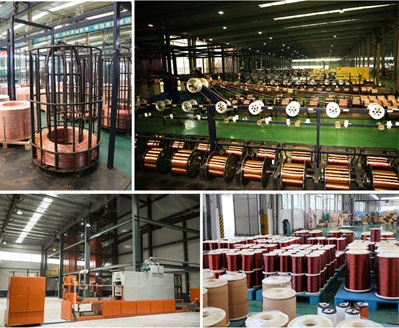In the world of modern technology, enameled wire might seem like an inconspicuous component, but its history is woven with innovation, ingenuity, and the quest for more efficient electrical systems. Enameled wire, also known as magnet wire, has been a fundamental building block in the development of various electrical devices that power our lives today. This article takes you on a journey through the fascinating history of enameled wire, tracing its origins, evolution, and contributions to modern technology.
The Origins: Early Experiments
The history of enameled wire dates back to the early 19th century when the foundations of electricity were being laid. Scientists and inventors like Michael Faraday and Joseph Henry were making significant strides in understanding the relationship between electricity and magnetism. However, it wasn't until the mid-19th century that practical applications of these theories began to emerge.

The Birth of Enameled Wire
Enameled wire, in its essence, is a wire coated with a thin layer of insulating enamel, usually made from materials like polyester, polyurethane, or polyesterimide. The use of enamel to insulate wires was developed as a response to the growing demand for more efficient and compact electrical systems.
The earliest forms of enameled wire were simple in design, often involving hand-coating wires with varnishes to insulate them. These early experiments paved the way for the development of more advanced manufacturing processes, enabling the mass production of enameled wire.
Industrial Revolution and Beyond
The Industrial Revolution brought about remarkable advancements in manufacturing processes, including the production of enameled wire. With the proliferation of telegraph lines, electric generators, and other electrical devices, the demand for insulated wire surged. This demand prompted engineers and scientists to refine the production methods of enameled wire, resulting in improved durability and electrical conductivity.
During the late 19th and early 20th centuries, as electricity became an integral part of daily life, enameled wire found applications in various fields, from telecommunication to power transmission. Its use in transformers, electric motors, and generators revolutionized industries, making way for more compact and efficient devices.
Enameled Wire in Modern Technology
As technology continued to advance, enameled wire played an essential role in the development of cutting-edge technologies. The rise of electronics in the mid-20th century further expanded the applications of enameled wire. Miniaturization and the need for intricate circuitry led to the development of even finer enameled wires capable of carrying high frequencies and currents.
Today, enameled wire is an essential component in a wide range of products, including consumer electronics, automotive systems, aerospace technologies, and renewable energy solutions. Its unique combination of electrical conductivity and insulation properties remains crucial for transmitting power and data efficiently.
Conclusion
The history of enameled wire is a testament to human ingenuity and the continuous quest for advancement. From its humble beginnings as a hand-coated wire to its pivotal role in modern technology, enameled wire has come a long way. Its evolution parallels the development of electricity and electronics, shaping the world we live in today.
As we marvel at the sleek gadgets and powerful machines that define our era, let's not forget the unassuming enameled wire that silently conducts the currents of innovation, lighting up our lives in more ways than we can imagine.
0086-18103865695
Office Add: #4 building One Belt One Road Industry, Jinshui District, Zhengzhou, China.
Factory Add: NO.1, Letian Road, Xindian town, Xinzheng County,Zhengzhou City, Henan Province, China